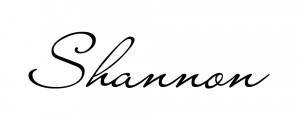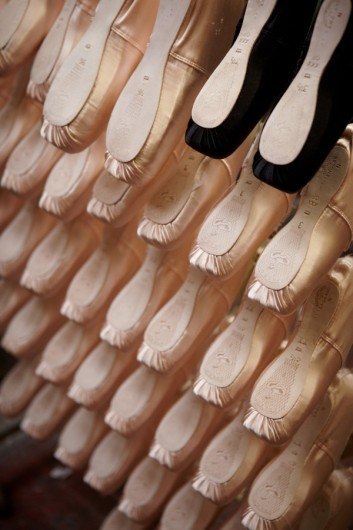The step from soft shoes to pointe is a leap from already dedicated ballerina to intense artistic training. Pointe is certainly not a natural way for the body to function. We were not designed to walk, run, and leap while balancing on a tiny cardboard box. Despite the fact that you (or your child) is overly eager to make the move, physiologically going into pointe shoes puts a lot of pressure on the entire anatomy. If you’re not prepared technically, that pressure will certainly be amplified in a negative way.
My first moment in pointe shoes was exhilarating – but S.L.O.W. I thought I would be in my shoes and at the barre from day 1 practicing the advanced steps that I was doing in my soft shoes. Instead I spent hours doing the simple exercises I mastered in my basic ballet classes all in preparation of pulling up into the proper pointe position and building the strength to stay there. Even though, I was hooked.
Generally students move up to their pointe shoes in the summer or winter, but keep in mind that seasoned teachers have consistently been watching their students at each practice preparing you to move up.
Here are some ways for dancers (and parents) to prepare for going en pointe:
The age debate
Growth plates generally close around 12-years of age. Therefore most dancers will go en pointe around 12-years-old. In a rare occasion if the student is younger than 12, a reputable studio might require a note from a pediatrician stating her body is ready for pointe. Master choreographer George Balanchine stated beautifully, “There is no reason to get a young dancer up on full pointe if she cannot do anything when she gets there!”
A foundation of excellent training
I prefer that dancers have spent 5- 7 years in serious ballet training and are currently practicing at least 2 times a week or more. (In some training areas, 6 days a week is considered rigorous.) Our teachers must see solid strength and balance in regular ballet classes in addition to fine tuned articulation of the foot.
The International Association for Dance Medicine & Science (IADMS) released a statement in 2009 dancers should be at least in their 4th year of training in a program specifically designed for professional dancers. This training is to ensure each dancer has developed the appropriate strength, range of motion, alignment, balance, and control necessary to safely dance in pointe shoes.
Mental and Physical Attitude
Some dancers think if they are the “best” in their class they should move into pointe shoes, but that is simply not the case. In addition to mastering skills and techniques, students must show us they are giving 110 % – even on easy combinations.
Both a positive mental and physical attitude, consistency in class attendance, play a crucial role in addition to how a student is performing.
The dangers of going en pointe too early
The bottom line is injury. Strength, stamina, coordination – if even one of those is lacking, a dancer is at risk of serious injury that could last a lifetime. There are a lot of naysayers out there protesting that performing in pointe shoes poses too many risks for long-term damage, however, participating in any physically challenging sport (football, soccer, basketball, rugby) puts you at risk for concussions, torn muscles, fractures, and bone/joint dislocation.
Dos and donts for parents and students hoping to go en pointe:
DON’T ask your child’s teacher if she is ready to lace up her pointe shoes. That simple question is really hinting that the teacher is not paying attention to the development of the dancer.
DO watch Youtube videos of professionals that you admire. Watch how they articulate through feet and posture. American Ballet Theater and Misty Copeland are two great examples to study.
DO get a TheraBand and practice ankle strengthening exercises.
DON’T ask your teacher what you could do better in practice to go en pointe. You should know because we are giving you corrections to work on every day.
DO talk to in-studio mentors.
DO research the cost of pointe shoes.
DON’T practice on your pointe shoes at home.
Live. Love. Dance.

Image credit, Patricia Niven, photographer



Recent Comments